Abstract
Five subjects exercised with the knee extensor of one limb at work loads ranging from 10 to 60 W. Measurements of pulmonary oxygen uptake, heart rate, leg blood flow, blood pressure and femoral arterial-venous differences for oxygen and lactate were made between 5 and 10 min of the exercise. Flow in the femoral vein was measured using constant infusion of saline near 0 degrees C. Since a cuff was inflated just below the knee during the measurements and because the hamstrings were inactive, the measured flow represented primarily the perfusion of the knee extensors. Blood flow increased linearly with work load right up to an average value of 5.7 l min-1. Mean arterial pressure was unchanged up to a work load of 30 W, but increased thereafter from 100 to 130 mmHg. The femoral arterial-venous oxygen difference at maximum work averaged 14.6% (v/v), resulting in an oxygen uptake of 0.80 l min-1. With a mean estimated weight of the knee extensors of 2.30 kg the perfusion of maximally exercising skeletal muscle of man is thus in the order of 2.5 l kg-1 min-1, and the oxygen uptake 0.35 l kg-1 min-1. Limitations in the methods used previously to determine flow and/or the characteristics of the exercise model used may explain why earlier studies in man have failed to demonstrate the high perfusion of muscle reported here. It is concluded that muscle blood flow is closely related to the oxygen demand of the exercising muscles. The hyperaemia at low work intensities is due to vasodilatation, and an elevated mean arterial blood pressure only contributes to the linear increase in flow at high work rates. The magnitude of perfusion observed during intense exercise indicates that the vascular bed of skeletal muscle is not a limiting factor for oxygen transport.
Full text
PDF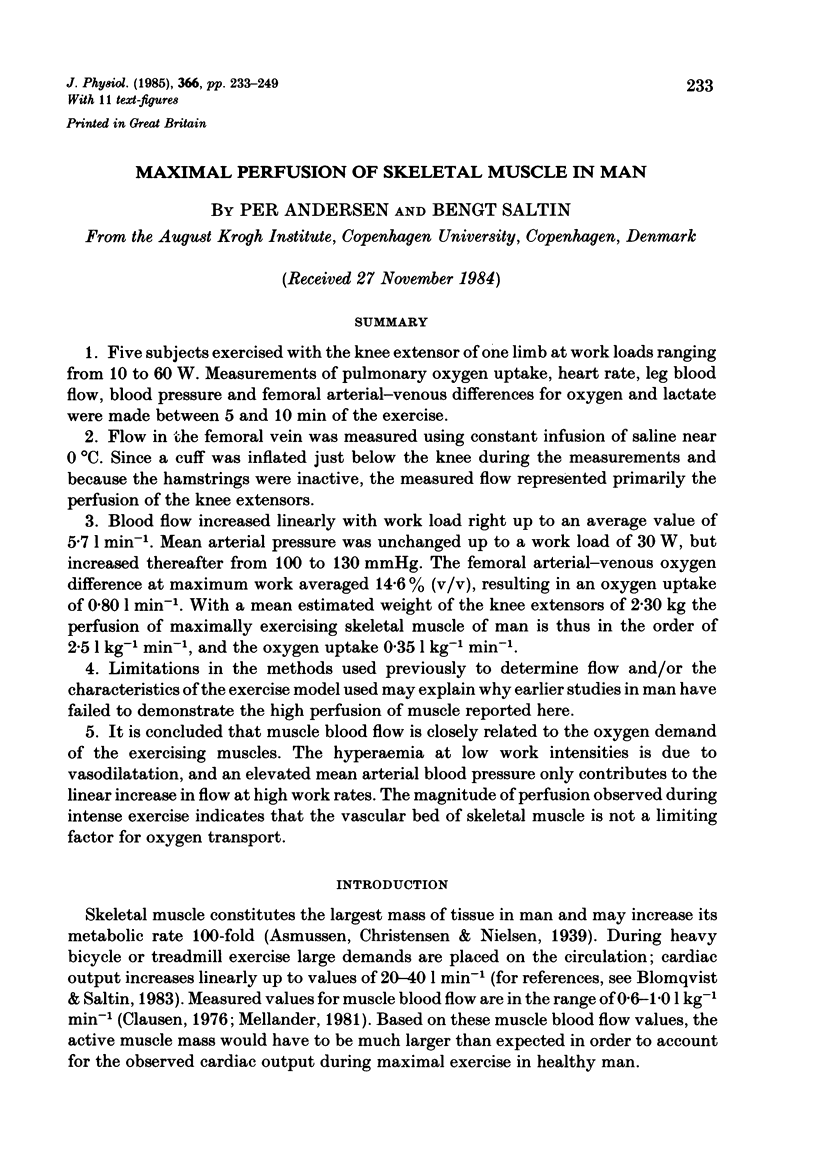
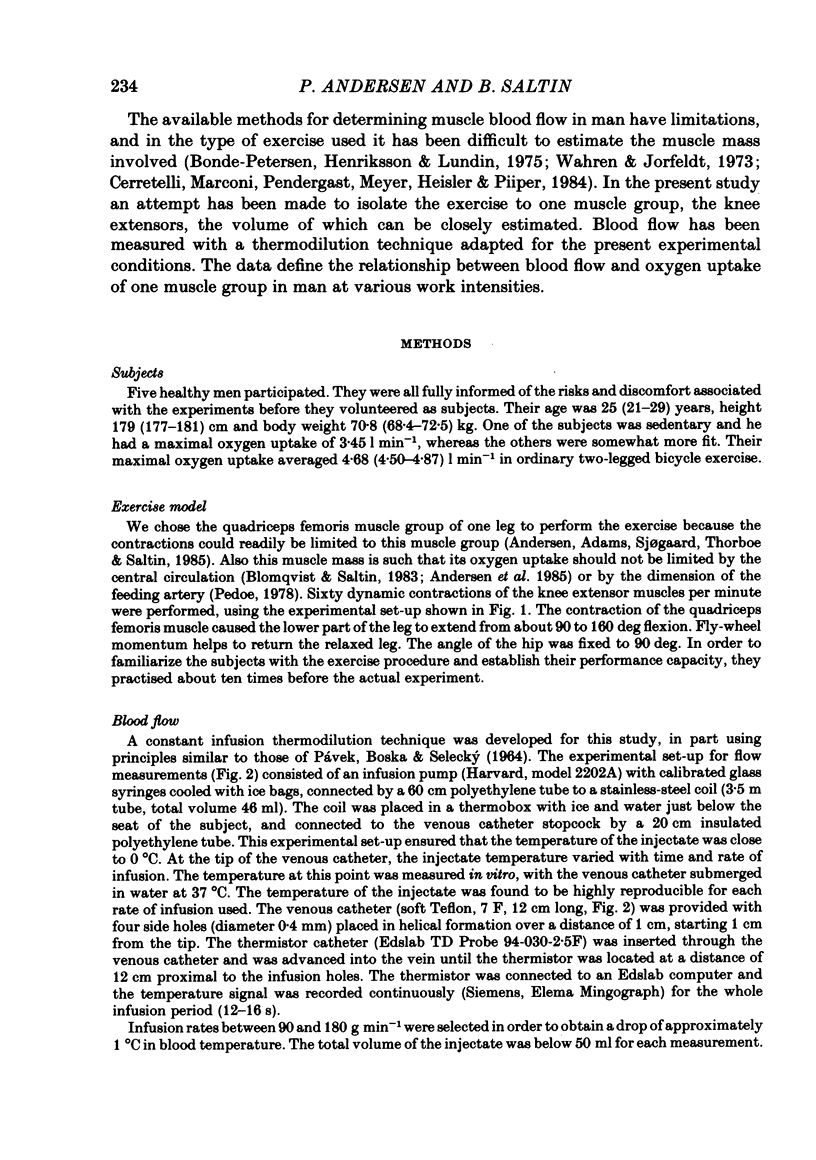
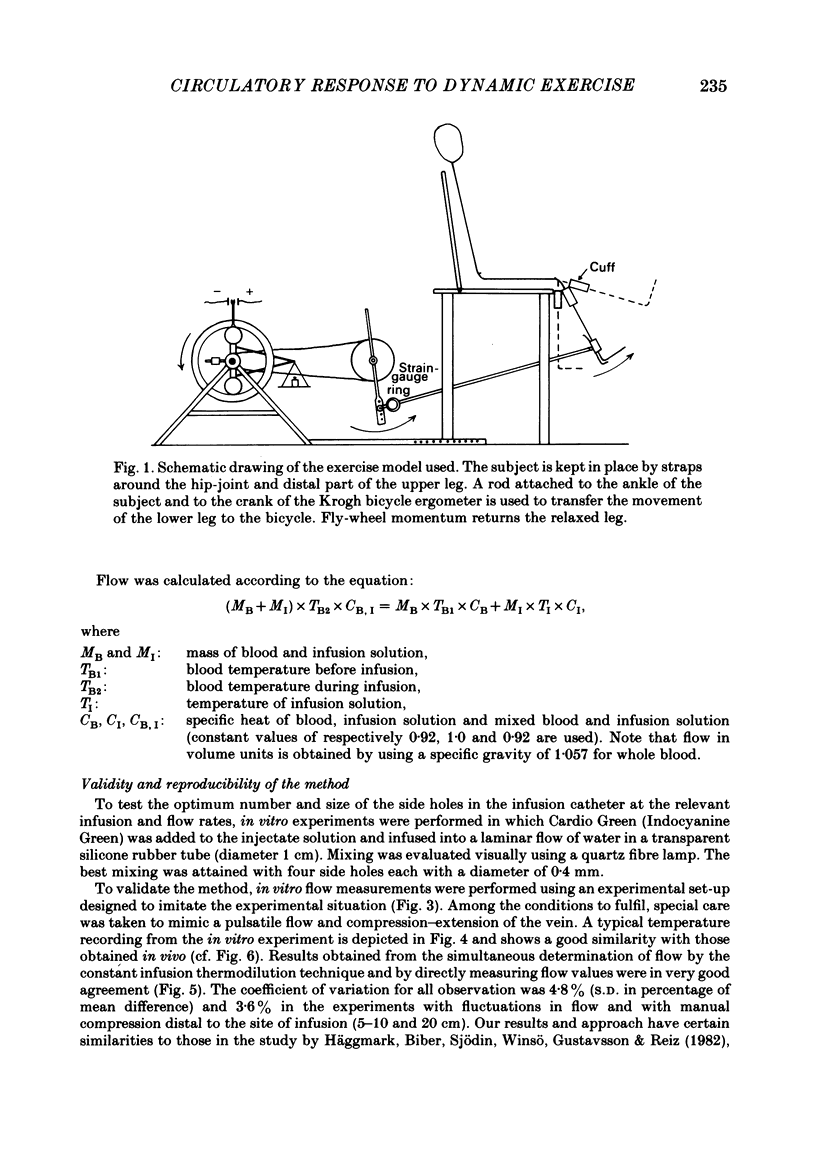
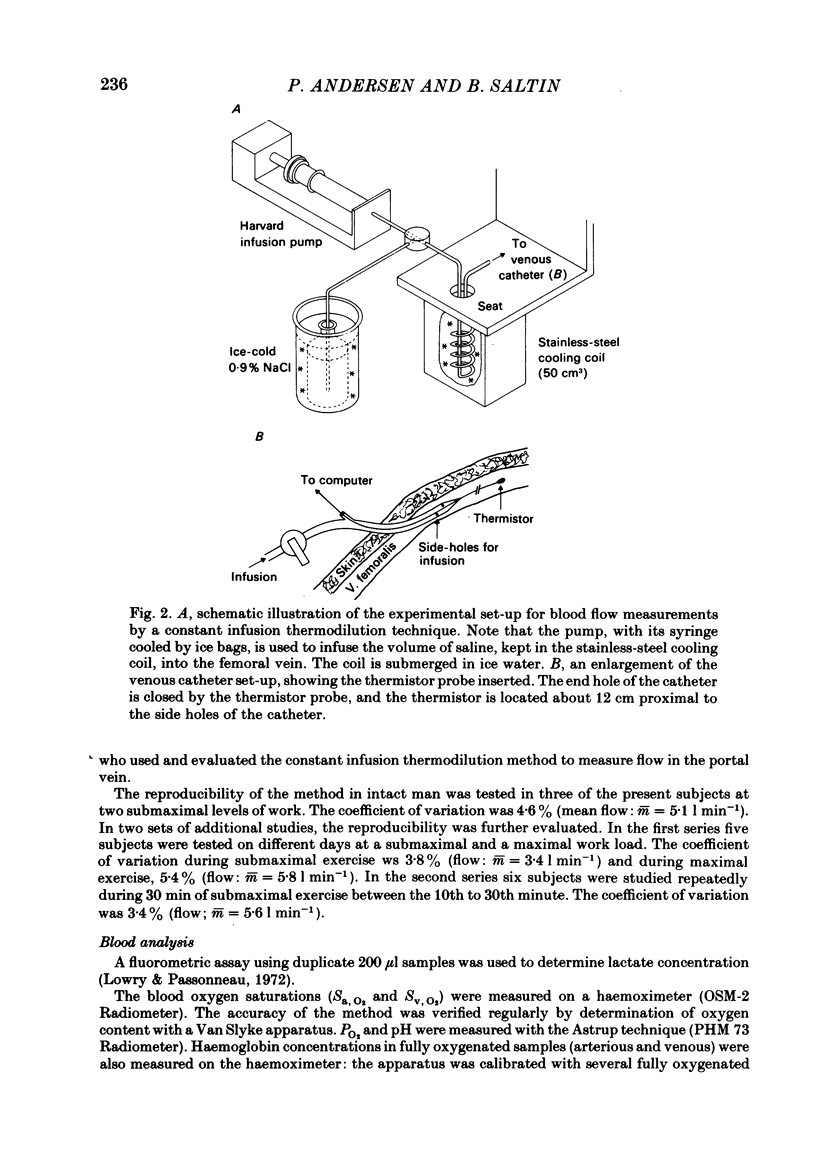
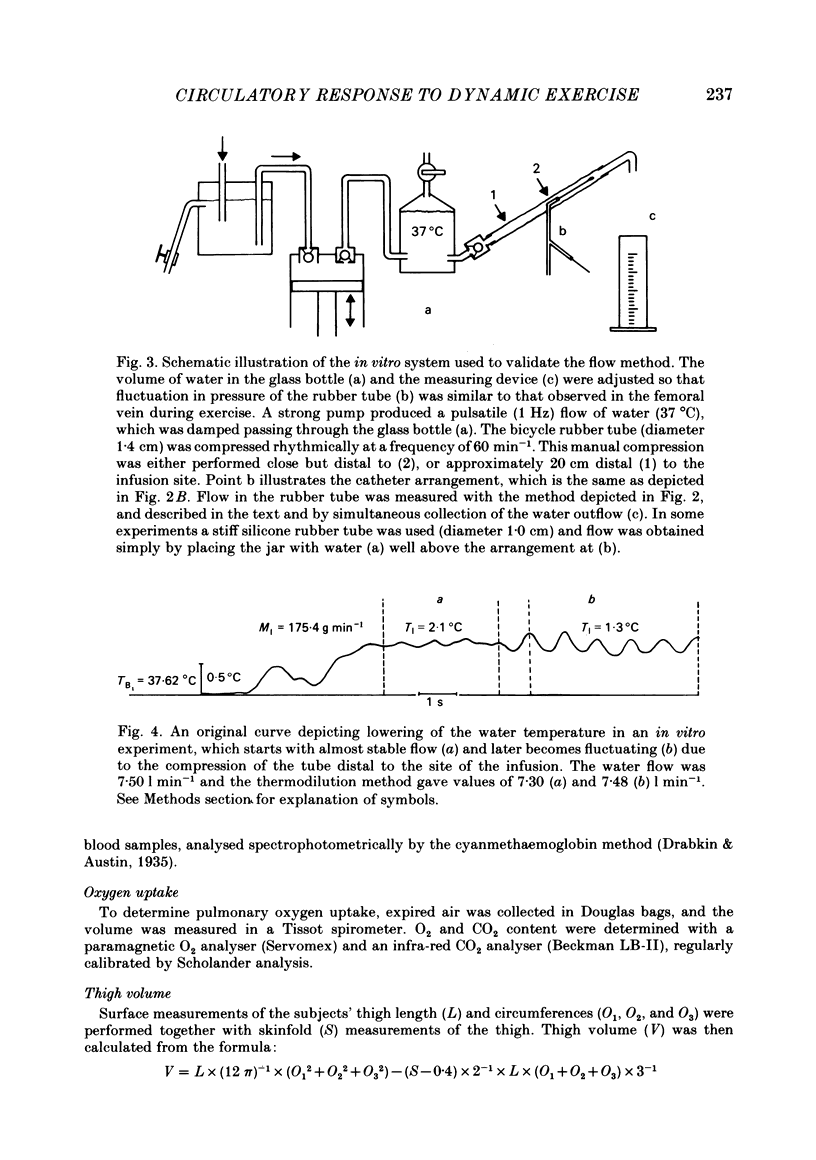
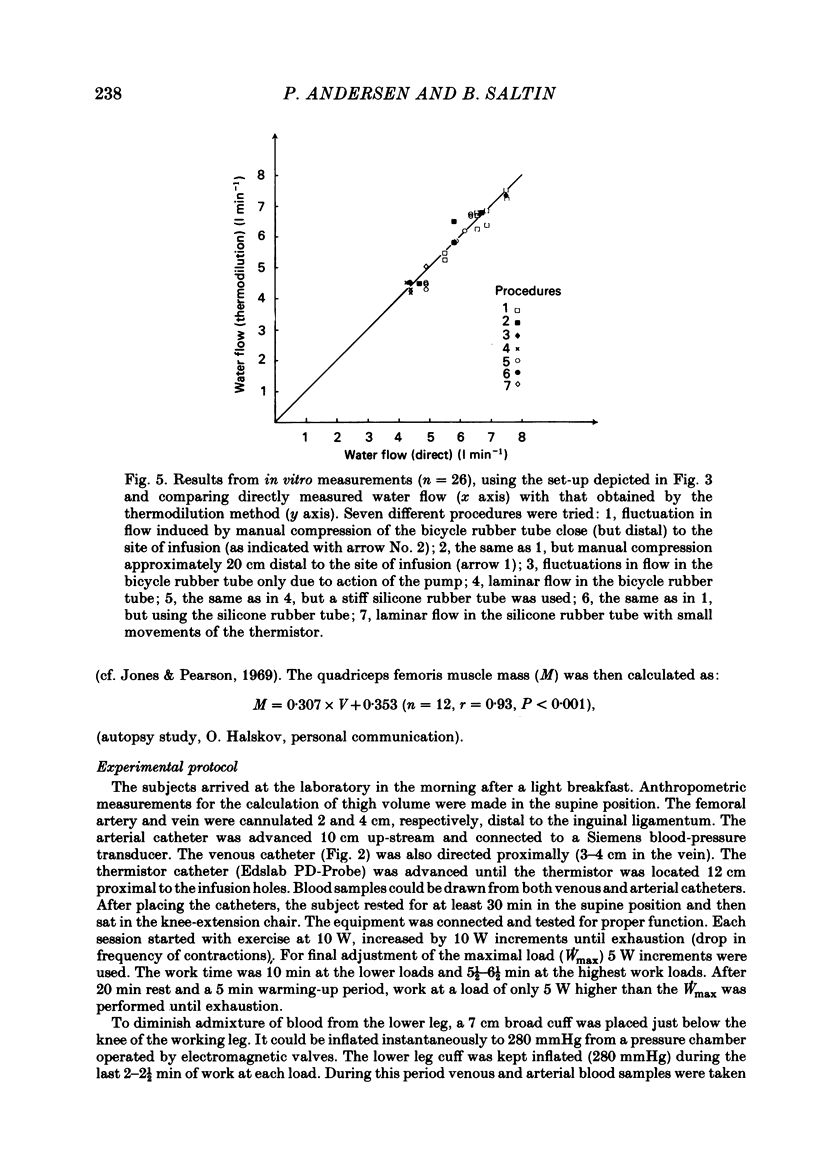
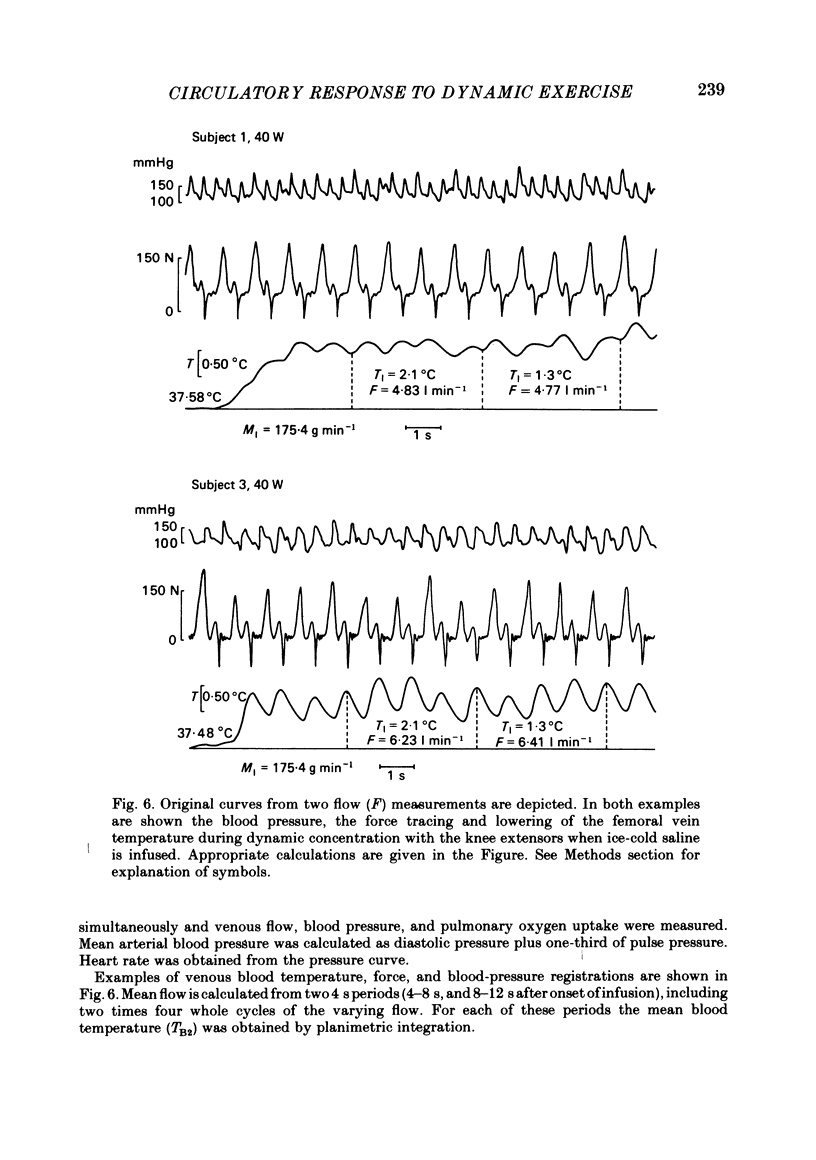
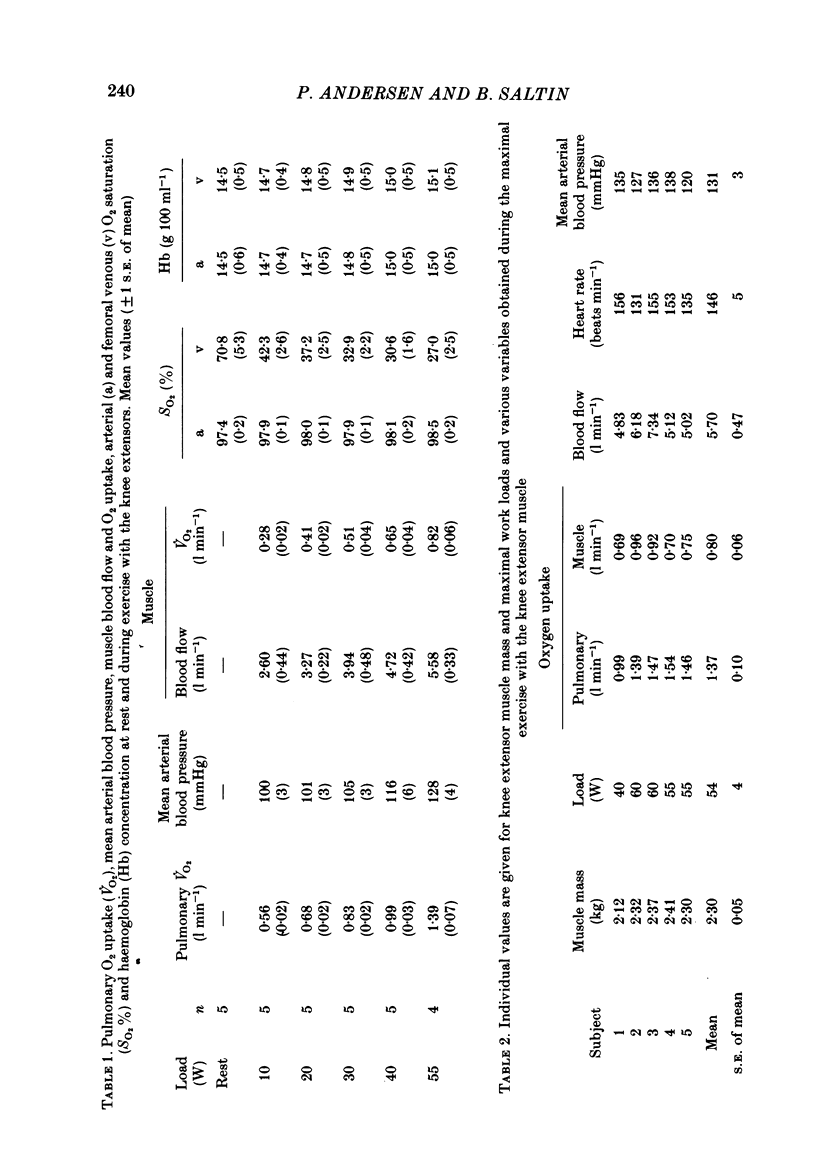
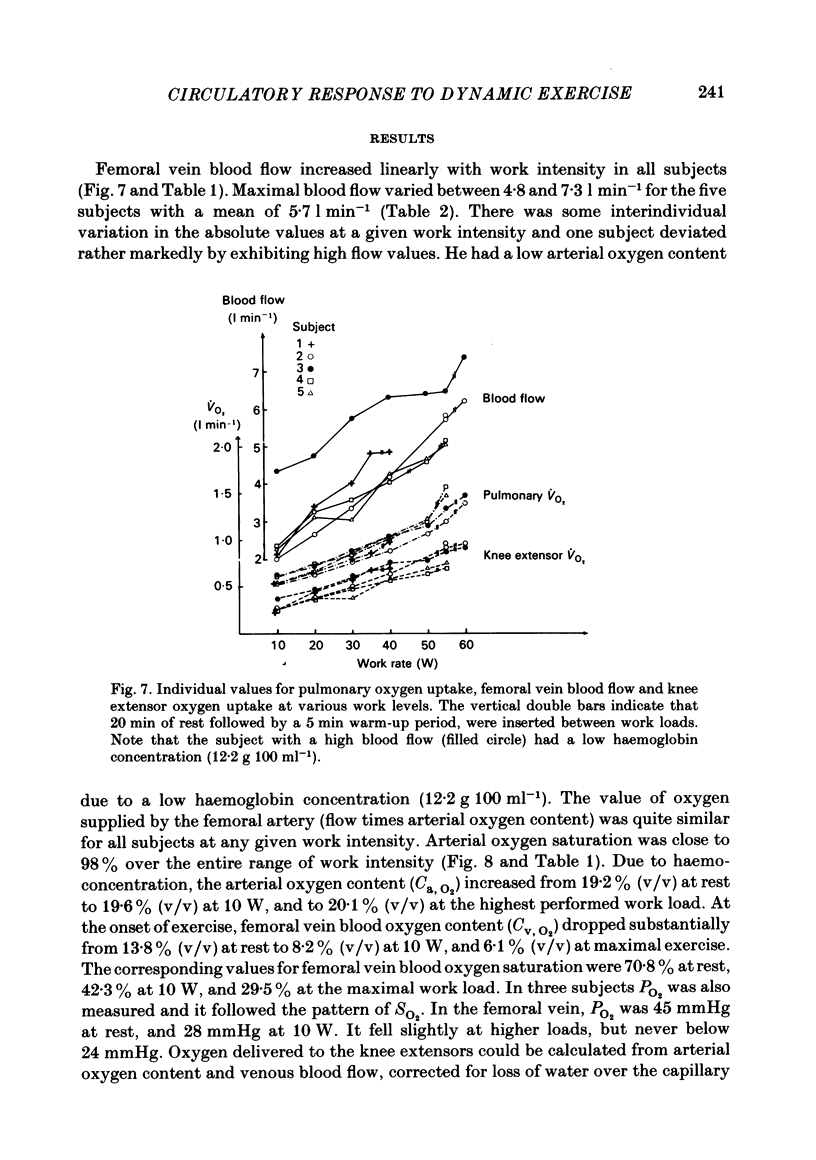
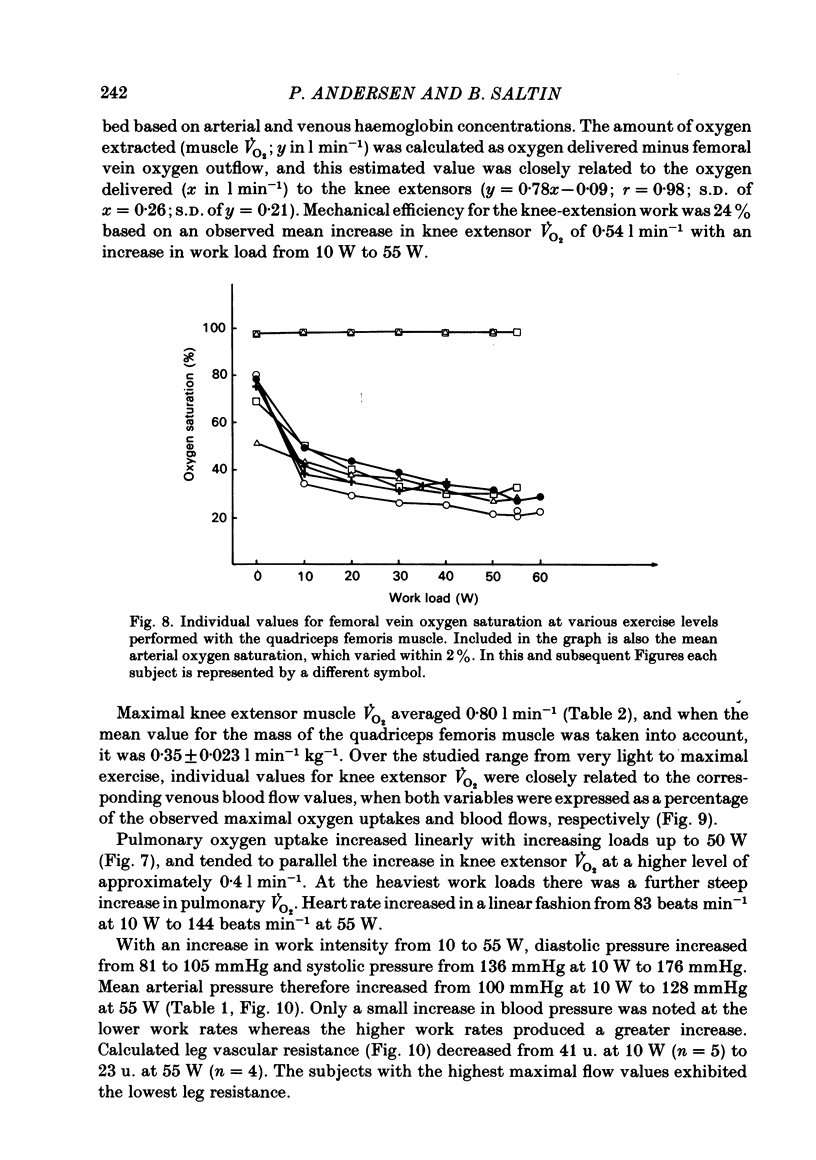
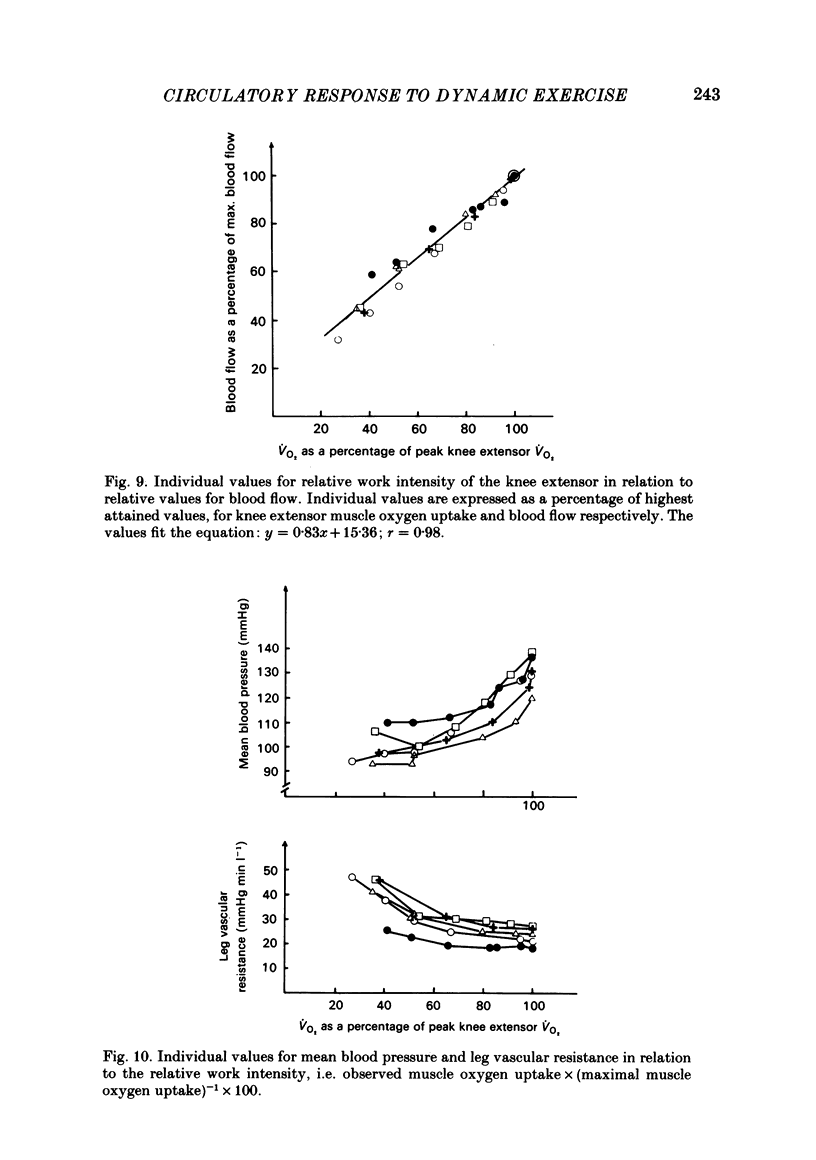
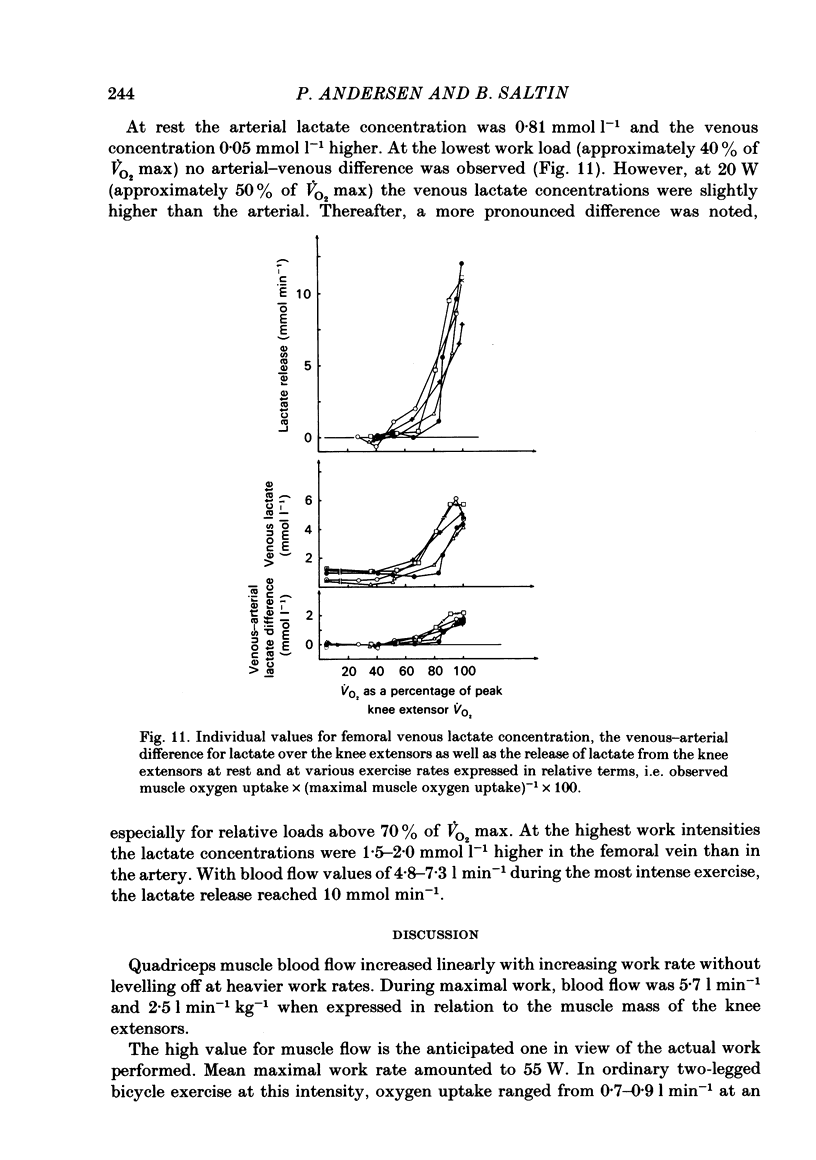
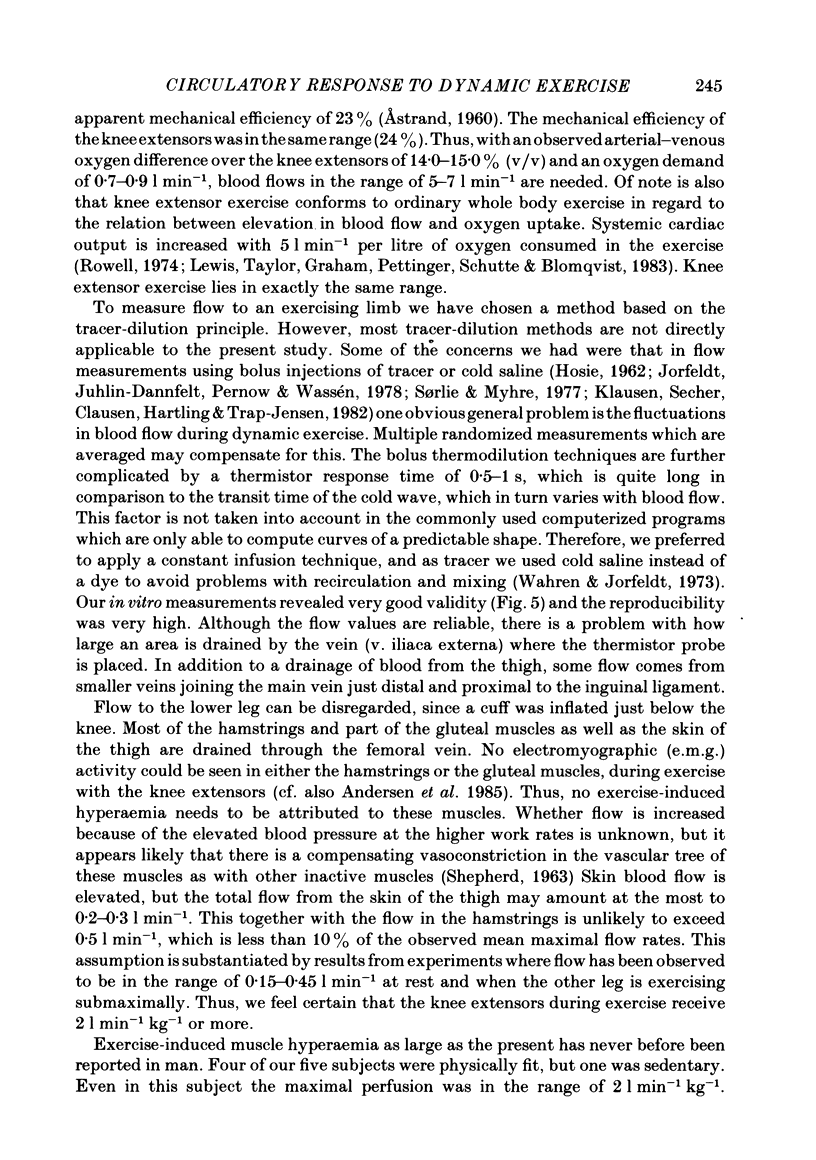
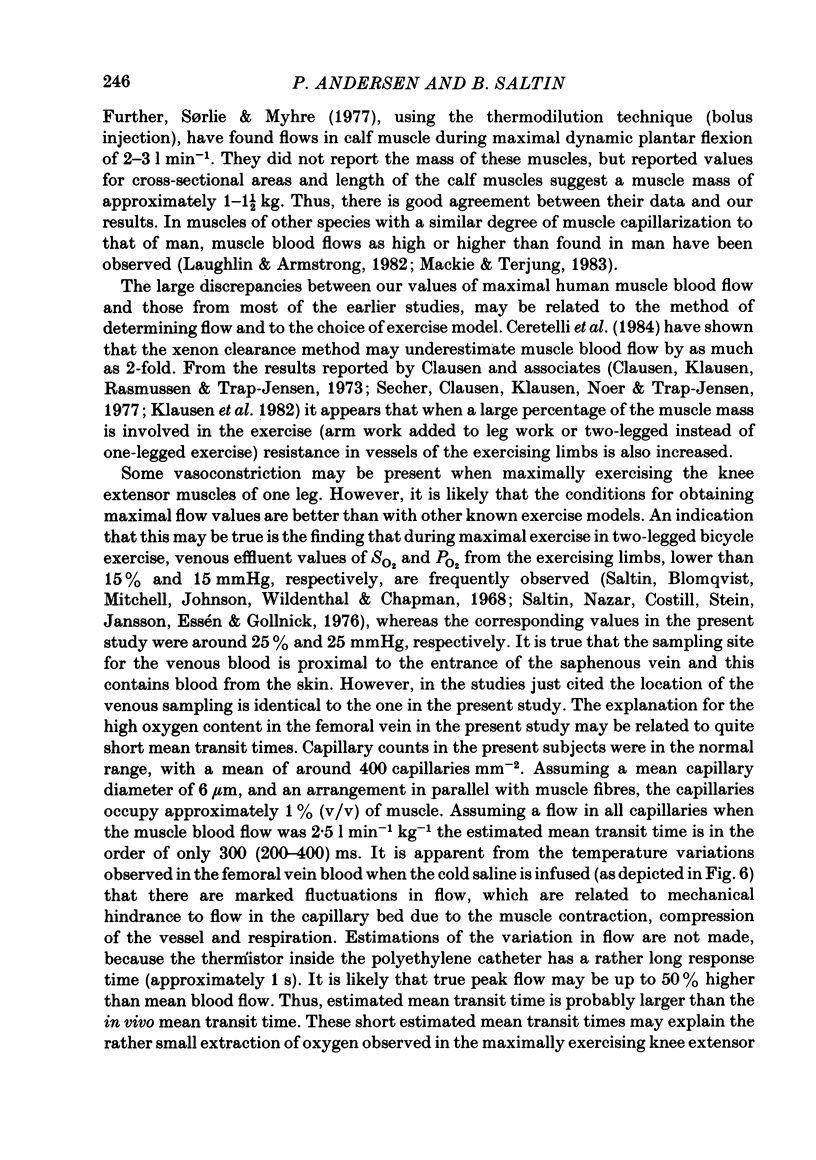
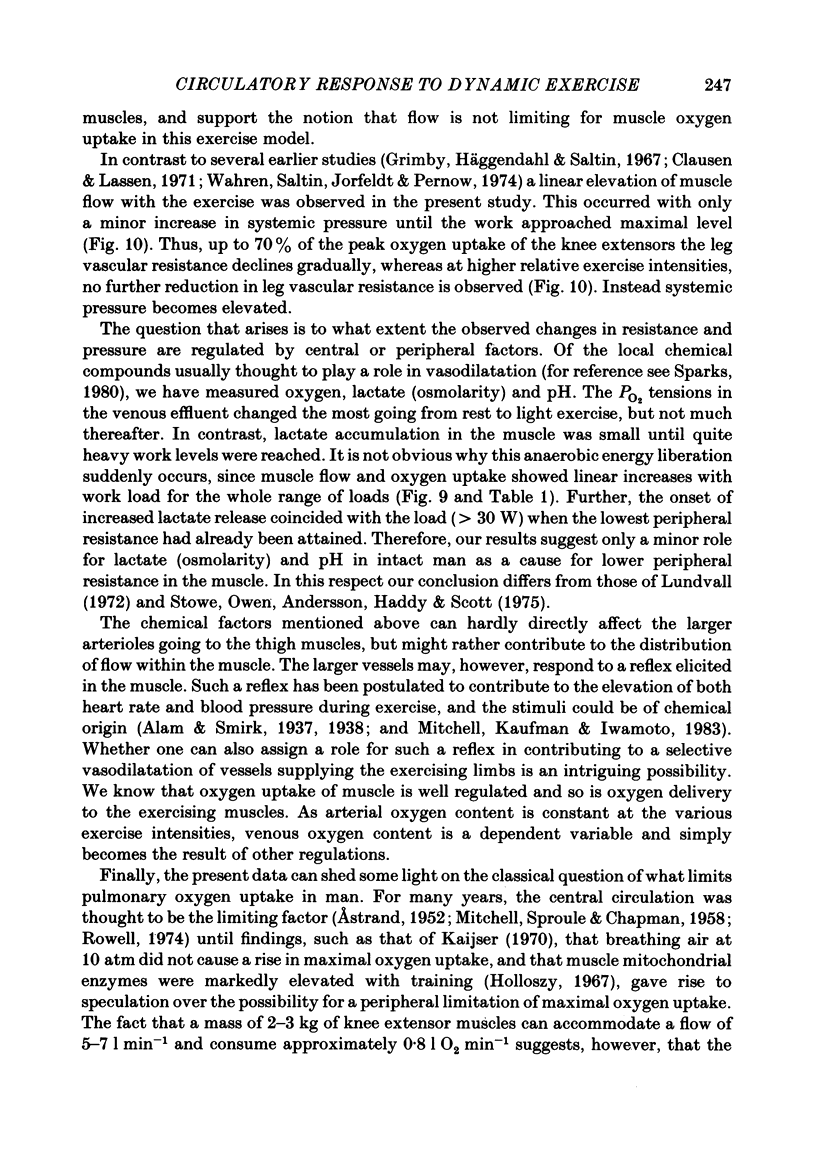
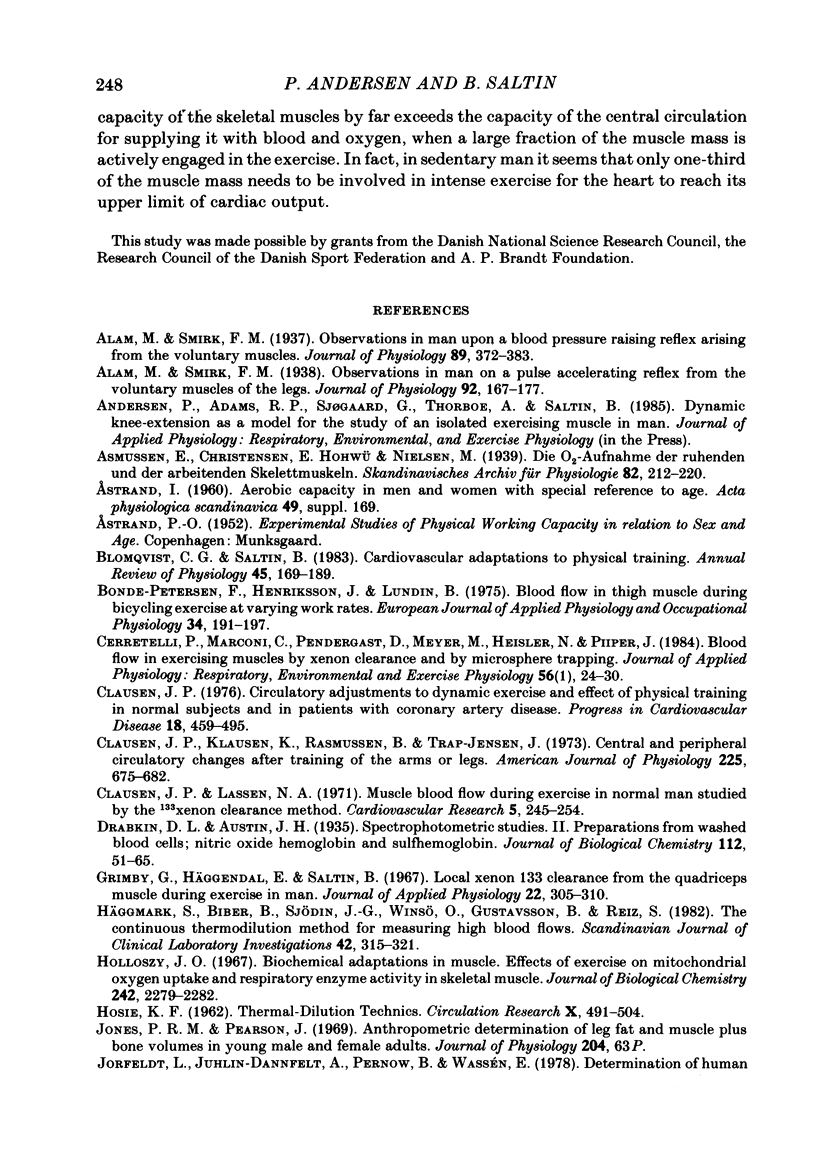
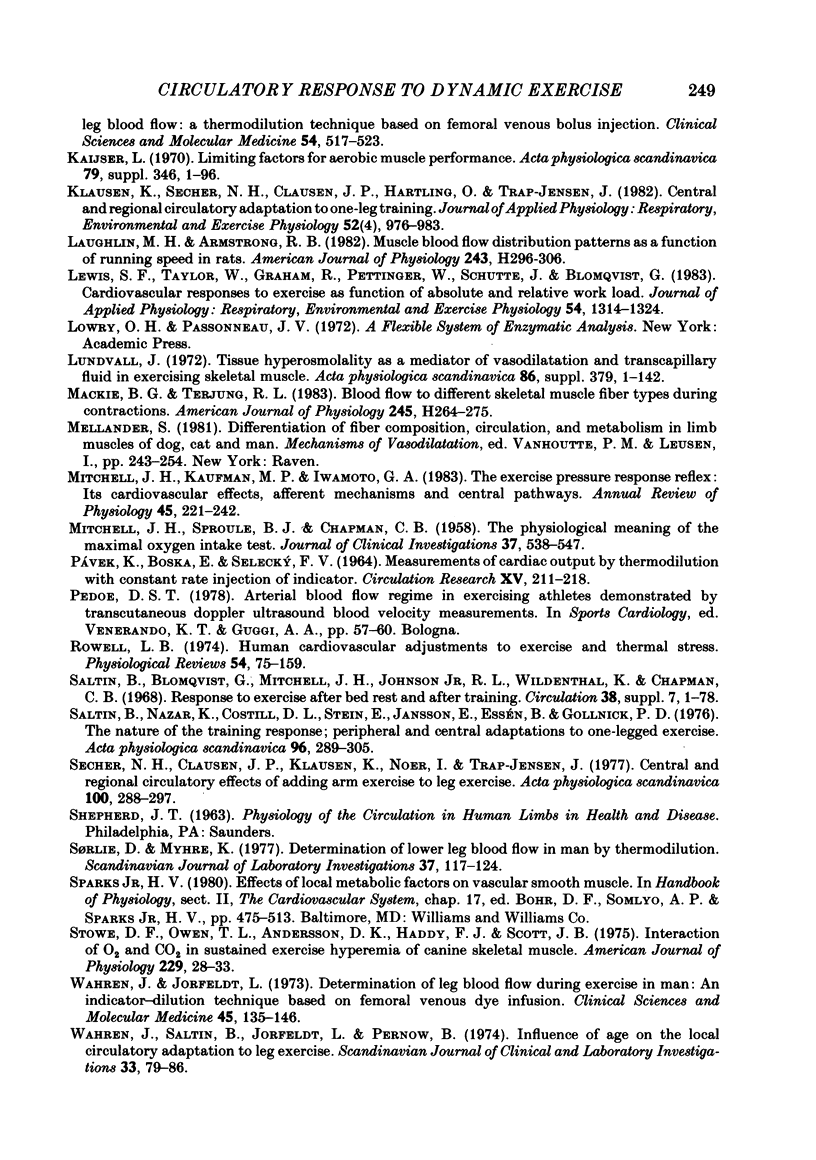
Selected References
These references are in PubMed. This may not be the complete list of references from this article.
- Alam M., Smirk F. H. Observations in man on a pulse-accelerating reflex from the voluntary muscles of the legs. J Physiol. 1938 Mar 14;92(2):167–177. doi: 10.1113/jphysiol.1938.sp003592. [DOI] [PMC free article] [PubMed] [Google Scholar]
- Alam M., Smirk F. H. Observations in man upon a blood pressure raising reflex arising from the voluntary muscles. J Physiol. 1937 Jun 3;89(4):372–383. doi: 10.1113/jphysiol.1937.sp003485. [DOI] [PMC free article] [PubMed] [Google Scholar]
- Blomqvist C. G., Saltin B. Cardiovascular adaptations to physical training. Annu Rev Physiol. 1983;45:169–189. doi: 10.1146/annurev.ph.45.030183.001125. [DOI] [PubMed] [Google Scholar]
- Bonde-Petersen F., Henriksson J., Lundin B. Blood flow in thigh muscle during bicycling exercise at varying work rates. Eur J Appl Physiol Occup Physiol. 1975 Aug 15;34(3):191–197. doi: 10.1007/BF00999932. [DOI] [PubMed] [Google Scholar]
- Cerretelli P., Marconi C., Pendergast D., Meyer M., Heisler N., Piiper J. Blood flow in exercising muscles by xenon clearance and by microsphere trapping. J Appl Physiol Respir Environ Exerc Physiol. 1984 Jan;56(1):24–30. doi: 10.1152/jappl.1984.56.1.24. [DOI] [PubMed] [Google Scholar]
- Clausen J. P. Circulatory adjustments to dynamic exercise and effect of physical training in normal subjects and in patients with coronary artery disease. Prog Cardiovasc Dis. 1976 May-Jun;18(6):459–495. doi: 10.1016/0033-0620(76)90012-8. [DOI] [PubMed] [Google Scholar]
- Clausen J. P., Klausen K., Rasmussen B., Trap-Jensen J. Central and peripheral circulatory changes after training of the arms or legs. Am J Physiol. 1973 Sep;225(3):675–682. doi: 10.1152/ajplegacy.1973.225.3.675. [DOI] [PubMed] [Google Scholar]
- Clausen J. P., Lassen N. A. Muscle blood flow during exercise in normal man studied by the 133Xenon clearance method. Cardiovasc Res. 1971 Apr;5(2):245–254. doi: 10.1093/cvr/5.2.245. [DOI] [PubMed] [Google Scholar]
- Grimby G., Häggendal E., Saltin B. Local xenon 133 clearance from the quadriceps muscle during exercise in man. J Appl Physiol. 1967 Feb;22(2):305–310. doi: 10.1152/jappl.1967.22.2.305. [DOI] [PubMed] [Google Scholar]
- HOSIE K. F. Thermal-dilution technics. Circ Res. 1962 Mar;10:491–504. doi: 10.1161/01.res.10.3.491. [DOI] [PubMed] [Google Scholar]
- Holloszy J. O. Biochemical adaptations in muscle. Effects of exercise on mitochondrial oxygen uptake and respiratory enzyme activity in skeletal muscle. J Biol Chem. 1967 May 10;242(9):2278–2282. [PubMed] [Google Scholar]
- Häggmark S., Biber B., Sjödin J. G., Winsö O., Gustavsson B., Reiz S. The continuous thermodilution method for measuring high blood flows. Scand J Clin Lab Invest. 1982 Jun;42(4):315–321. [PubMed] [Google Scholar]
- Jones P. R., Pearson J. Anthropometric determination of leg fat and muscle plus bone volumes in young male and female adults. J Physiol. 1969 Oct;204(2):63P–66P. [PubMed] [Google Scholar]
- Kaijser L. Limiting factors for aerobic muscle performance. The influence of varying oxygen pressure and temperature. Acta Physiol Scand Suppl. 1970;346:1–96. [PubMed] [Google Scholar]
- Klausen K., Secher N. H., Clausen J. P., Hartling O., Trap-Jensen J. Central and regional circulatory adaptations to one-leg training. J Appl Physiol Respir Environ Exerc Physiol. 1982 Apr;52(4):976–983. doi: 10.1152/jappl.1982.52.4.976. [DOI] [PubMed] [Google Scholar]
- Laughlin M. H., Armstrong R. B. Muscular blood flow distribution patterns as a function of running speed in rats. Am J Physiol. 1982 Aug;243(2):H296–H306. doi: 10.1152/ajpheart.1982.243.2.H296. [DOI] [PubMed] [Google Scholar]
- Lewis S. F., Taylor W. F., Graham R. M., Pettinger W. A., Schutte J. E., Blomqvist C. G. Cardiovascular responses to exercise as functions of absolute and relative work load. J Appl Physiol Respir Environ Exerc Physiol. 1983 May;54(5):1314–1323. doi: 10.1152/jappl.1983.54.5.1314. [DOI] [PubMed] [Google Scholar]
- Lundvall J. Tissue hyperosmolality as a mediator of vasodilatation and transcapillary fluid flux in exercising skeletal muscle. Acta Physiol Scand Suppl. 1972;379:1–142. [PubMed] [Google Scholar]
- MITCHELL J. H., SPROULE B. J., CHAPMAN C. B. The physiological meaning of the maximal oxygen intake test. J Clin Invest. 1958 Apr;37(4):538–547. doi: 10.1172/JCI103636. [DOI] [PMC free article] [PubMed] [Google Scholar]
- Mitchell J. H., Kaufman M. P., Iwamoto G. A. The exercise pressor reflex: its cardiovascular effects, afferent mechanisms, and central pathways. Annu Rev Physiol. 1983;45:229–242. doi: 10.1146/annurev.ph.45.030183.001305. [DOI] [PubMed] [Google Scholar]
- Rowell L. B. Human cardiovascular adjustments to exercise and thermal stress. Physiol Rev. 1974 Jan;54(1):75–159. doi: 10.1152/physrev.1974.54.1.75. [DOI] [PubMed] [Google Scholar]
- Saltin B., Nazar K., Costill D. L., Stein E., Jansson E., Essén B., Gollnick D. The nature of the training response; peripheral and central adaptations of one-legged exercise. Acta Physiol Scand. 1976 Mar;96(3):289–305. doi: 10.1111/j.1748-1716.1976.tb10200.x. [DOI] [PubMed] [Google Scholar]
- Secher N. H., Clausen J. P., Klausen K., Noer I., Trap-Jensen J. Central and regional circulatory effects of adding arm exercise to leg exercise. Acta Physiol Scand. 1977 Jul;100(3):288–297. doi: 10.1111/j.1748-1716.1977.tb05952.x. [DOI] [PubMed] [Google Scholar]
- Stowe D. F., Owen T. L., Anderson D. K., Haddy F. J., Scott J. B. Interaction of O2 and CO2 in sustained exercise hyperemia of canine skeletal muscle. Am J Physiol. 1975 Jul;229(1):28–33. doi: 10.1152/ajplegacy.1975.229.1.28. [DOI] [PubMed] [Google Scholar]
- Sørlie D., Myhre K. Determination of lower leg blood flow in man by thermodilution. Scand J Clin Lab Invest. 1977 Apr;37(2):117–124. doi: 10.1080/00365517709156065. [DOI] [PubMed] [Google Scholar]
- Wahren J., Jorfeldt L. Determination of leg blood flow during exercise in man: an indicator-dilution technique based on femoral venous dye infusion. Clin Sci Mol Med. 1973 Aug;45(2):135–146. doi: 10.1042/cs0450135. [DOI] [PubMed] [Google Scholar]
- Wahren J., Saltin B., Jorfeldt L., Pernow B. Influence of age on the local circulatory adaptation to leg exercise. Scand J Clin Lab Invest. 1974 Feb;33(1):79–86. doi: 10.3109/00365517409114201. [DOI] [PubMed] [Google Scholar]


